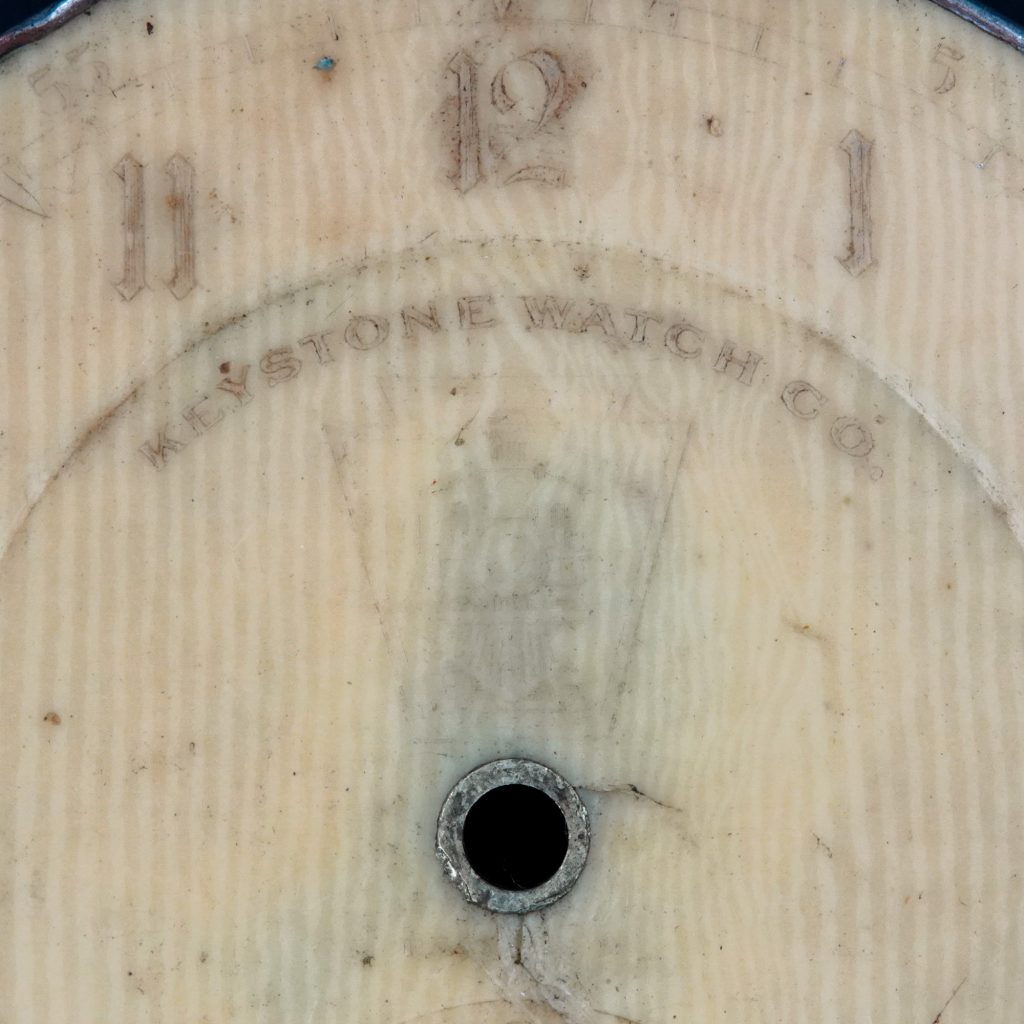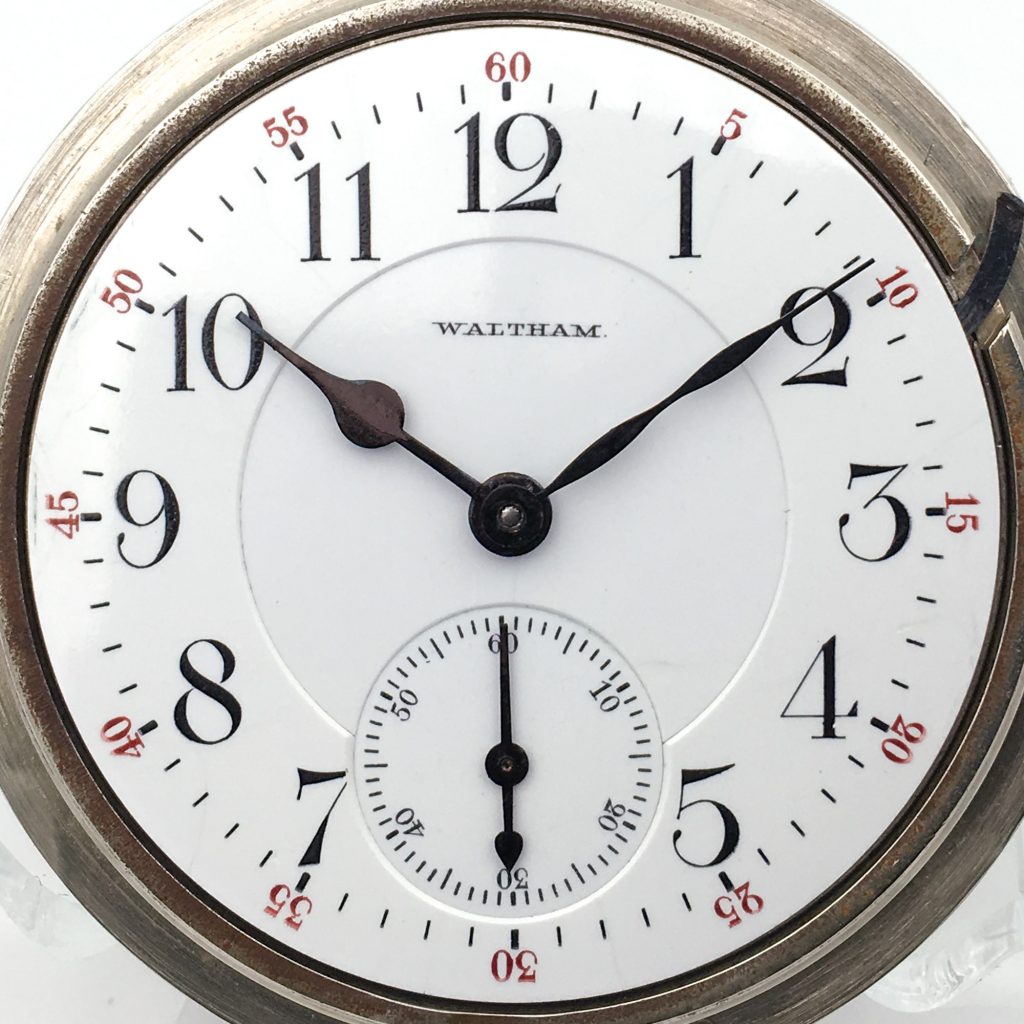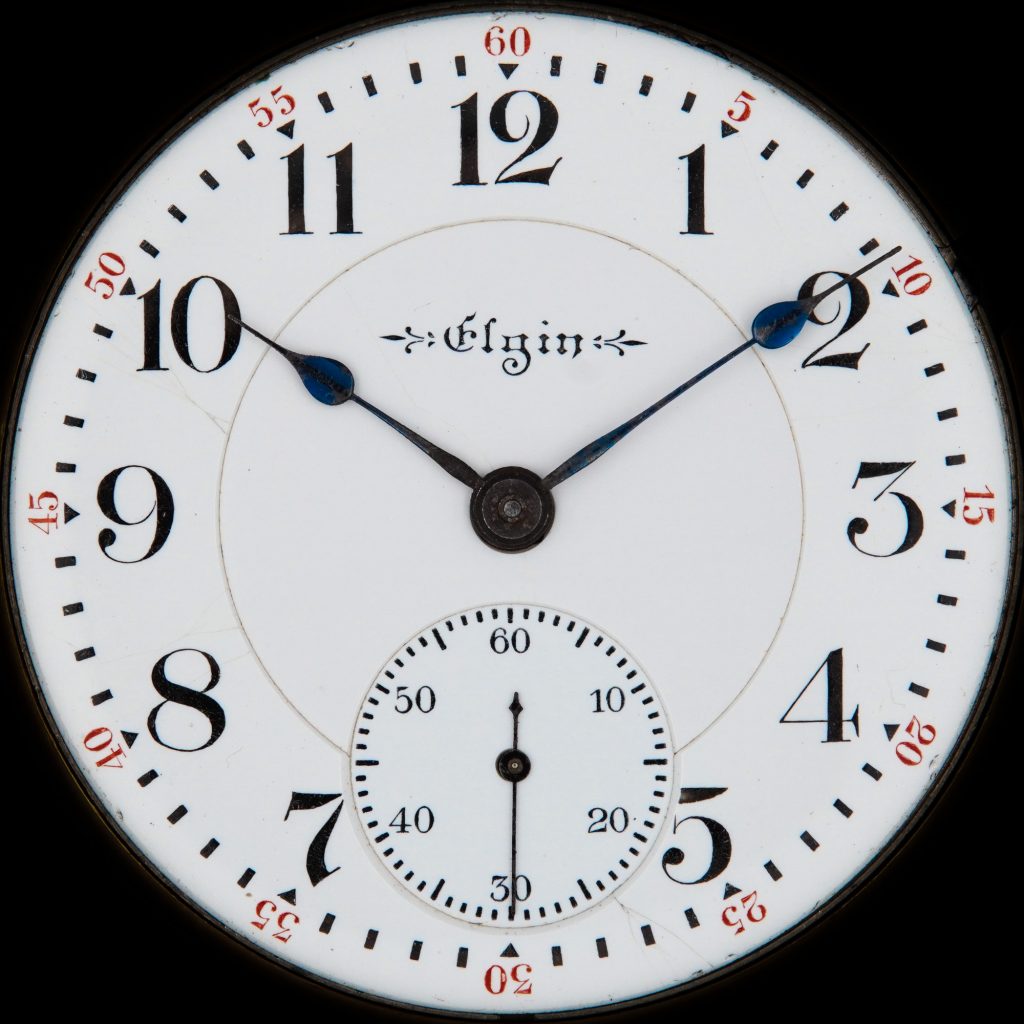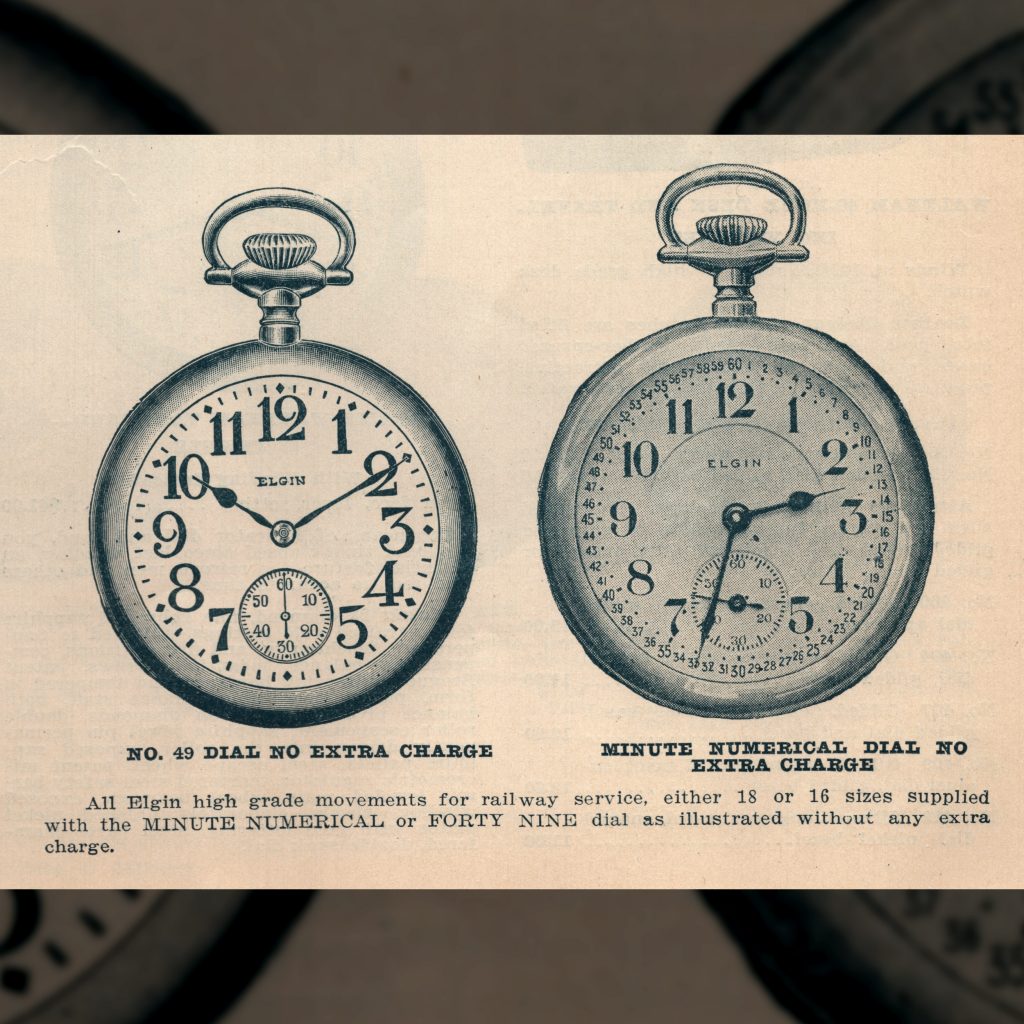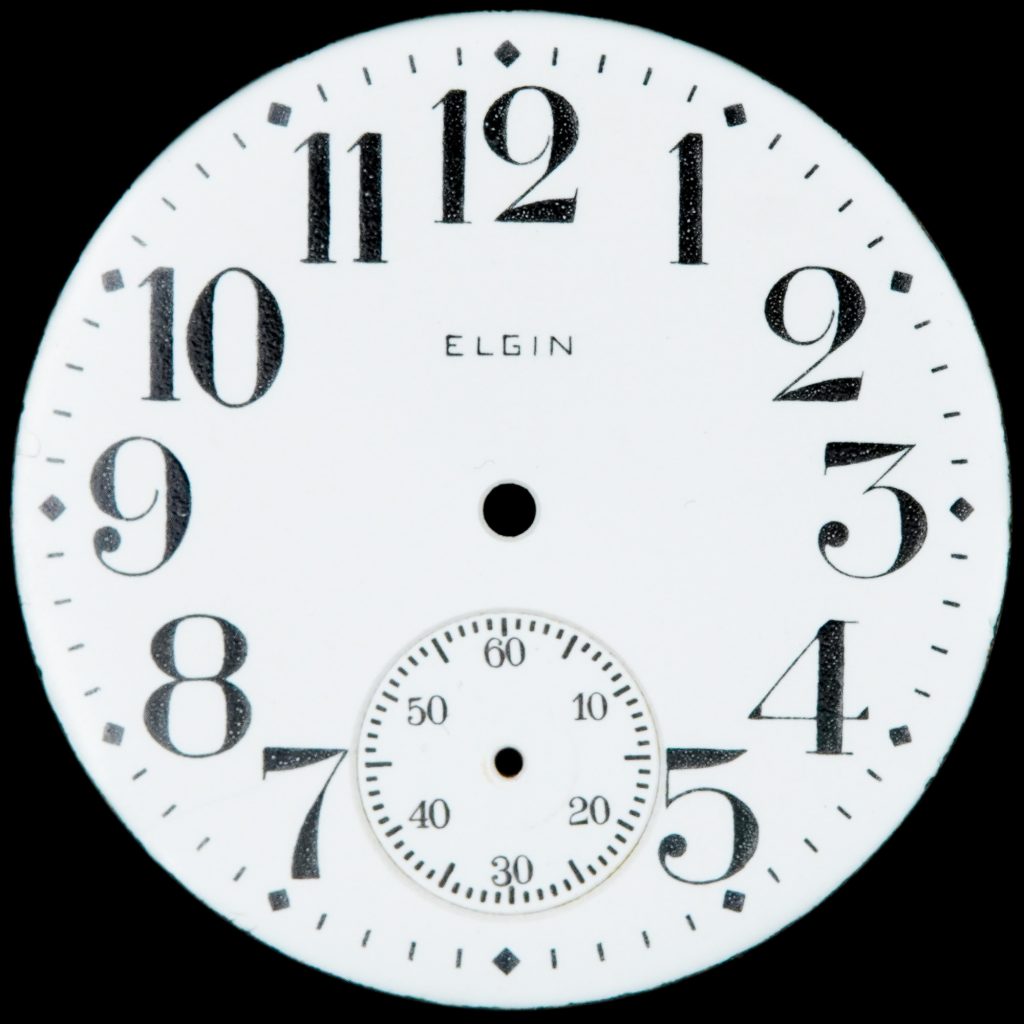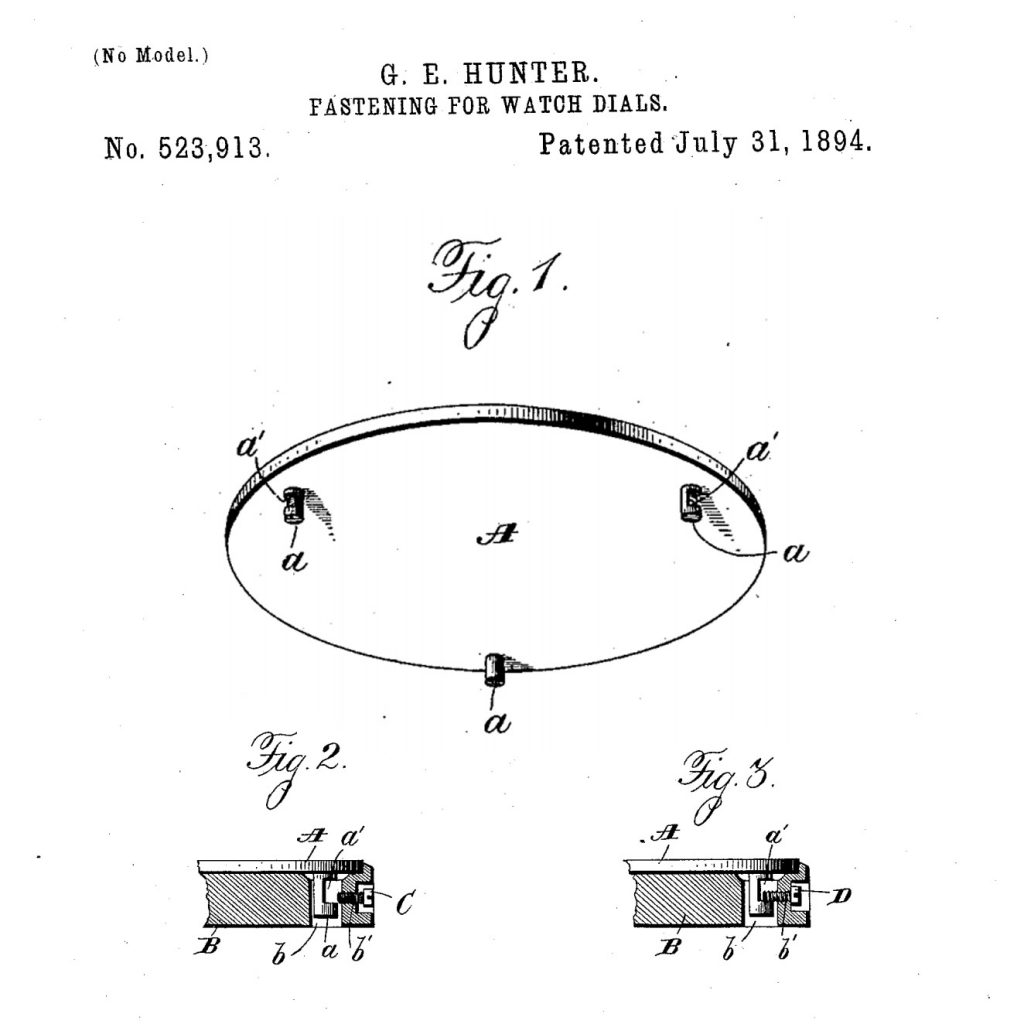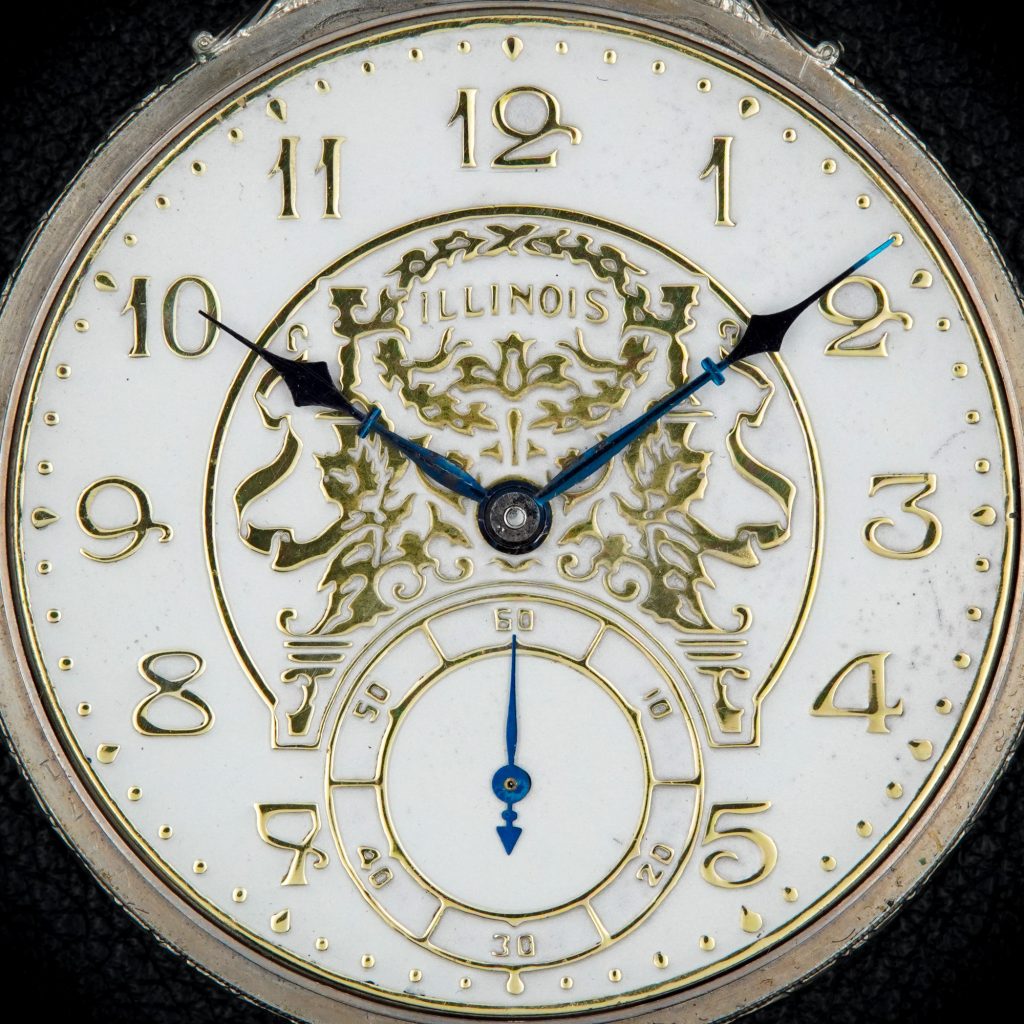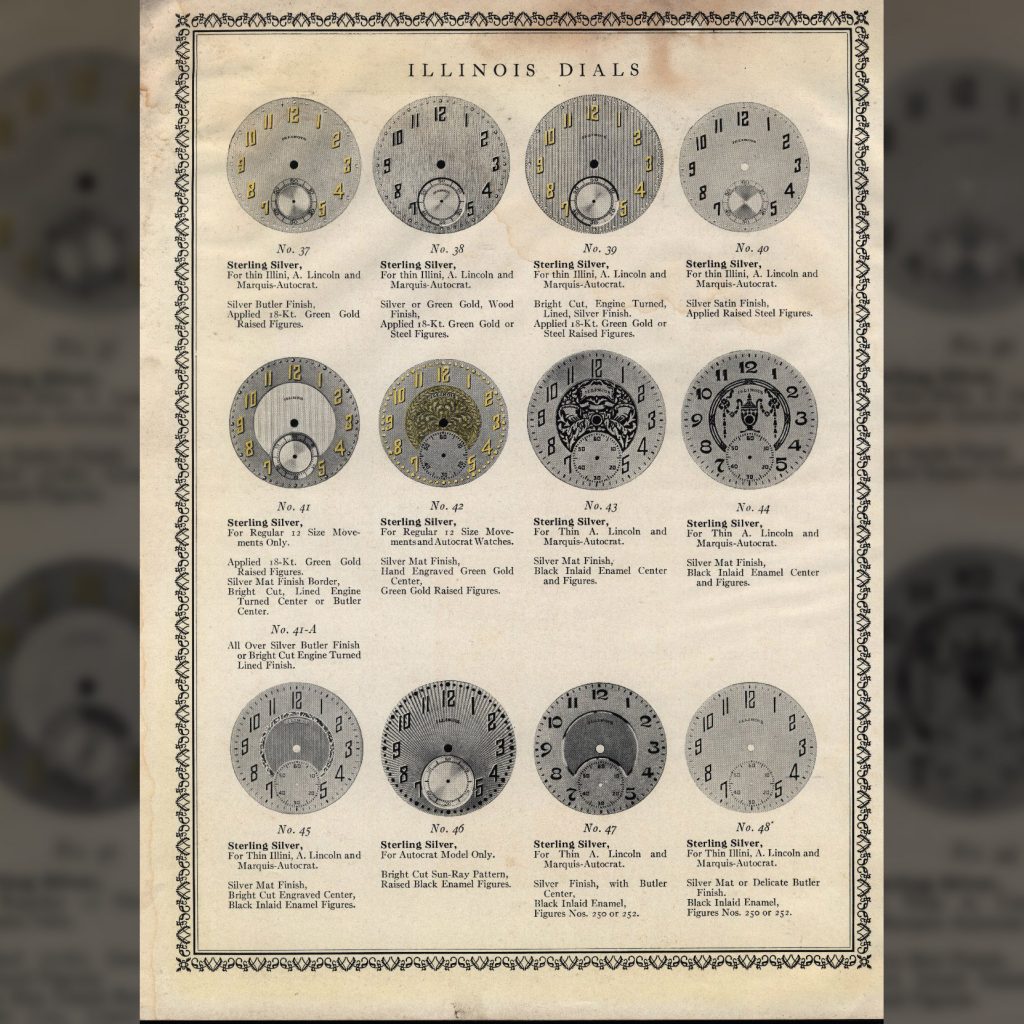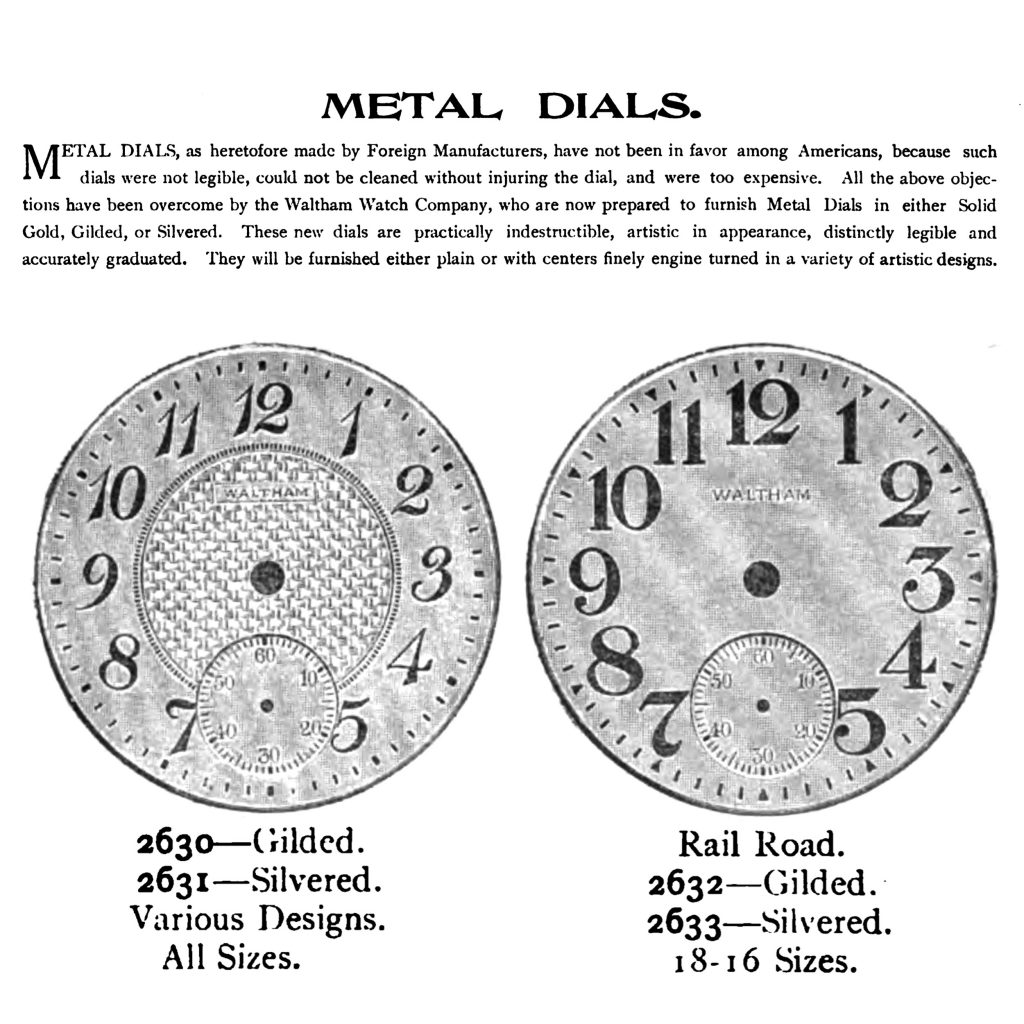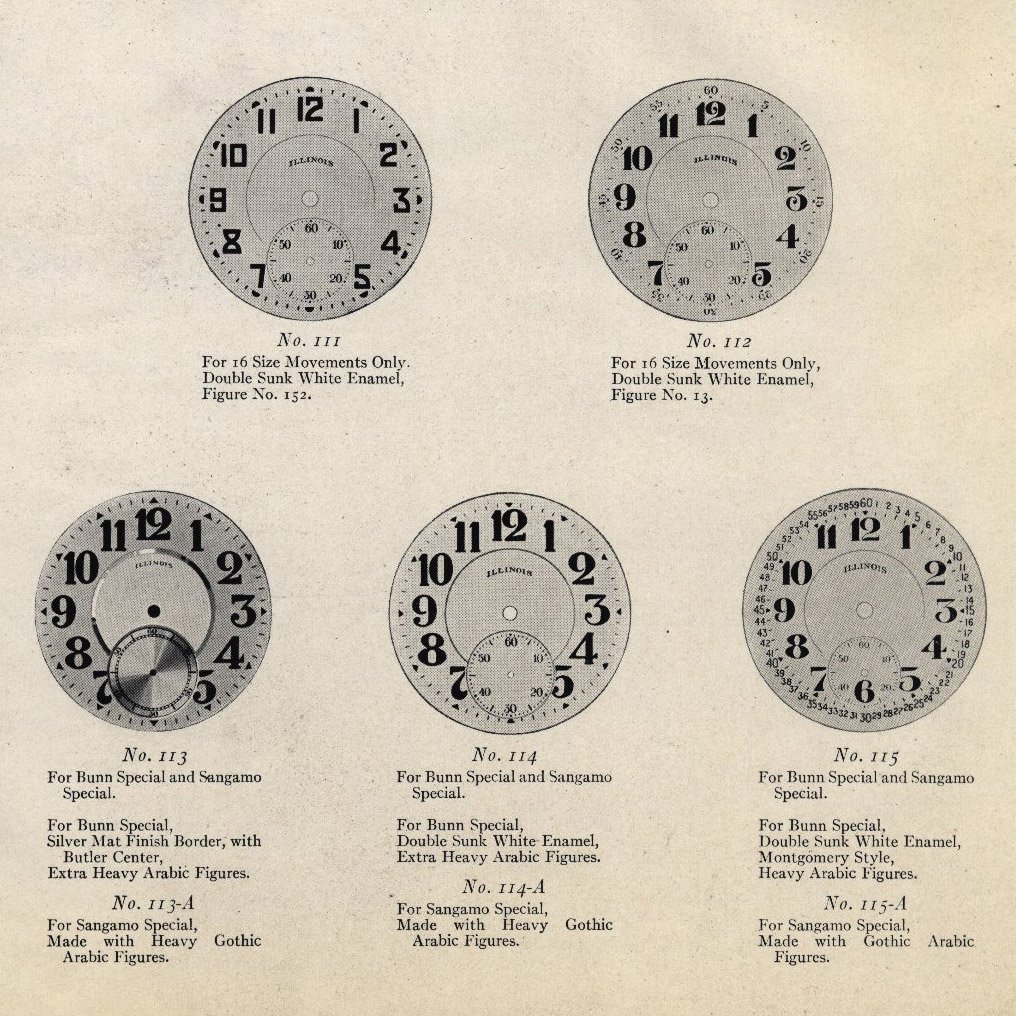
Dial Design

Pictured: American Waltham Watch Company Dial No. 2531, c.1901 The No. 2531 dial furnished by the American Waltham Watch Company is strikingly similar to the Elgin No. 2399 dial featured.
Pictured: Elgin National Watch Company Railroad Dial No. 2399, c.1902. Before introducing the iconic No. 49 railroad dial around 1908, the double-sunk No. 2399 dial was one of the most.
Pictured: Elgin National Watch Company No. 49 (No. 2637) Single-Sunk Dial While Elgin’s iconic No. 49 railroad dial is generally seen in a double-sunk form, the company also furnished a.
Pictured: Illustration, U.S. Patent #498575. On July 31, 1894, George E. Hunter was granted a patent for his notched dial foot design, created to easily and securely fasten watch dials..
Pictured: Excerpt from the Illinois Watch Company Dials Circular No. 102, Published May 1927 By the 1920s, metal dials were quickly becoming the standard option on the majority of American.
Pictured: Excerpt from the 1909 Waltham Material Catalog Highlighting Metal Dial Options During the 1890s, fancy enamel dials were the fashionable trend in the watch market. After the turn of.
